Troubleshooting the Blue Screen of Death (BSOD) Errors
The Blue Screen Of Death (BSOD) error is a sign telling a user that Windows is experiencing interrupts and cannot run or boot due to critical issues. It is also called Stop Code which might prevent Windows from running and, in some cases, from booting. There are numerous Blue Screen Of Death errors that appear for several different reasons.

When a user encounters a BSOD error, they can search online using the Stop Code mentioned at the bottom of a Blue Screen Of Death error screen.
Most Common BSOD (Blue Screen of Death) Errors
There are hundreds of types of Blue Screen Of Death errors. Fortunately, we have covered the most common BSOD errors. If you encounter one of the following, read on to learn what causes these Stop code errors to occur.
- stop code memory management
- stop code critical process died
- stop code system service exception
- stop code inaccessible boot device
- stop code 0xc000021a
- stop code reference by pointer
- stop code driver power state failure
- stop code bad system config info
- stop code kernel security check failure
- stop code dpc watchdog violation
- stop code unexpected store exception
- stop code kmode exception not handled
- stop code machine check exception
- stop code ntfs file system
| Issue | Blue Screen Of Death (BSOD) |
| Possible Scenarios | Stuck in a Restart Loop Can't even Boot in Safe Mode |
| Caused By | Incompatible and Corrupted Drivers Corrupted System Files Corrupted Windows Images Malware |
| Possible Defective Hardware components | RAM Power Supply Unit GPU Peripheral devices |
When does a Blue Screen Of Death Error occur?
A BSOD or Stop code error could be due to corrupted drivers, system files, or faulty hardware. We cannot tell you the root cause of your stop code error as there is often no direct explanation. But usually, corrupted drivers damaged RAM, and broken Power Supply (PSU) are the main factors behind them.
Is a Blue screen Of Death normal?
No, Blue Screen Of Death (BSOD) is not normal as it prevents Windows from running and booting and can sometimes restart the computer in a loop. But you can easily fix it by following the methods listed in this article.
Is the Blue Screen Of Death fixable?
Yes, it is very easy to fix Blue Screen Of Death (BSOD) errors if you know their causes. You can easily learn all the scenarios as to why the users encounter BSOD errors by reading this article.
What are the common causes of Blue Screen Of Death or Stop Code?
The Blue Screen Of Death or Stop Error appears due to two main reasons, there is either a hardware problem with your computer or a software problem. You need to understand what we mean by software or hardware issues.
1. Software Problems
Software problems can be caused by corrupted or incompatible drivers, dangerous third-party programs, corrupted system files and Windows updates, and malware. 70 percent of BSOD errors result from corrupted drivers and malware.
Drivers Problem
Here we will not just talk about the Graphics drivers. Yes, the Stop code can be caused by a Graphics driver but there are also other devices connected to the computer that require drivers to communicate with Windows, such as a keyboard, network adapter, hard disk, and other peripherals devices driver, all of which can cause Stop errors to occur. That’s why disconnecting the peripheral devices helps most of the time to fix the Stop code.
Incompatible or corrupted driver downloaded through Windows Updates
Windows allows us to install drivers via a built-in Windows update utility. So users might not need to go to the Manufacturer’s website to download the hardware drivers unless the installed drivers are outdated. But, in some cases, it results in a BSOD error as sometimes Windows installs a corrupted or incompatible hardware driver.
System files corruption
Operating systems are based on system files and Windows images. These system files are the DLL files that are needed to run several Windows programs at a time. Dynamic Link Library (DLL) is a library that contains code written in a file that can be used by multiple programs at one time. If system files get corrupted or missing, it can result in a Stop code.
Malware
The main factor behind corrupted system files is a virus that can damage critical files required to run Windows properly. The virus can be installed through untrusted third-party programs, files, and folders. For that reason, it is recommended to scan the third-party programs, files, and folders before running them on the computer.
2. Hardware Problems
The Stop Code can also result from hardware problems like damaged Memory (RAM), Hard Drive (HDD), Solid State Drive (SSD), Power Supply Unit (PSU), and overheating of hardware components such as a Graphics card. Usually, from a hardware side, damaged RAM can often cause a Stop code to occur.
How to Fix any Blue Screen Of Death or Stop Code error?
When it comes to the Blue Screen Of Death error, users usually panic and think they have encountered a major problem that indicates faulty hardware. But they are not always right, as BSOD errors do not usually occur due to a hardware problem, as there are many other factors that we talked about earlier.
Boot Windows into Safe Mode (If Required)
The first thing you should confirm is whether your Windows is booting or not. It is possible that your Windows is not able to boot due to a BSOD error. It that’s the case, you need to boot Windows in safe mode by following the methods listed in this article.
Remember, if your Windows install is not booting normally due to a Stop code error, it does not mean there is a hardware problem in your system. It can also be due to a corrupted driver. You need to analyze the root cause to fix the problem.
- To enable Safe Mode, first, you need to turn off the system completely.
- Then, power on your system and wait till you see a Windows logo.
- When you see a Windows logo, instantly press the power button for at least 5 to 10 seconds to turn off the computer again.
- Repeat this process twice to get the Windows Recovery Environment Window.
- Once you are there, select Troubleshoot > Advanced Options > Troubleshoot > Startup Settings.
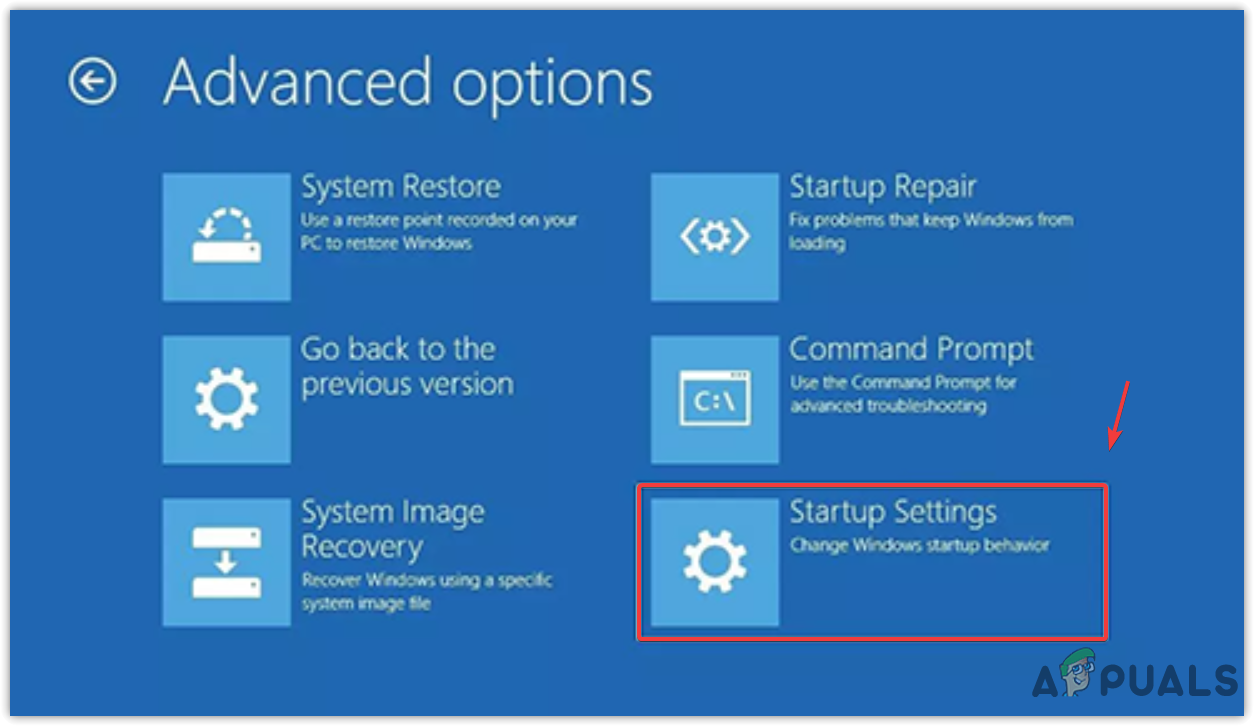
Selecting Startup Settings to enable Safe Mode - Click Restart from the bottom right, and wait for your system to restart.

Restarting Windows to enable Safe Mode - Now in the next step, you will get the various startup options. Press the F5 or 5 key to boot the Windows in Safe Mode with networking.
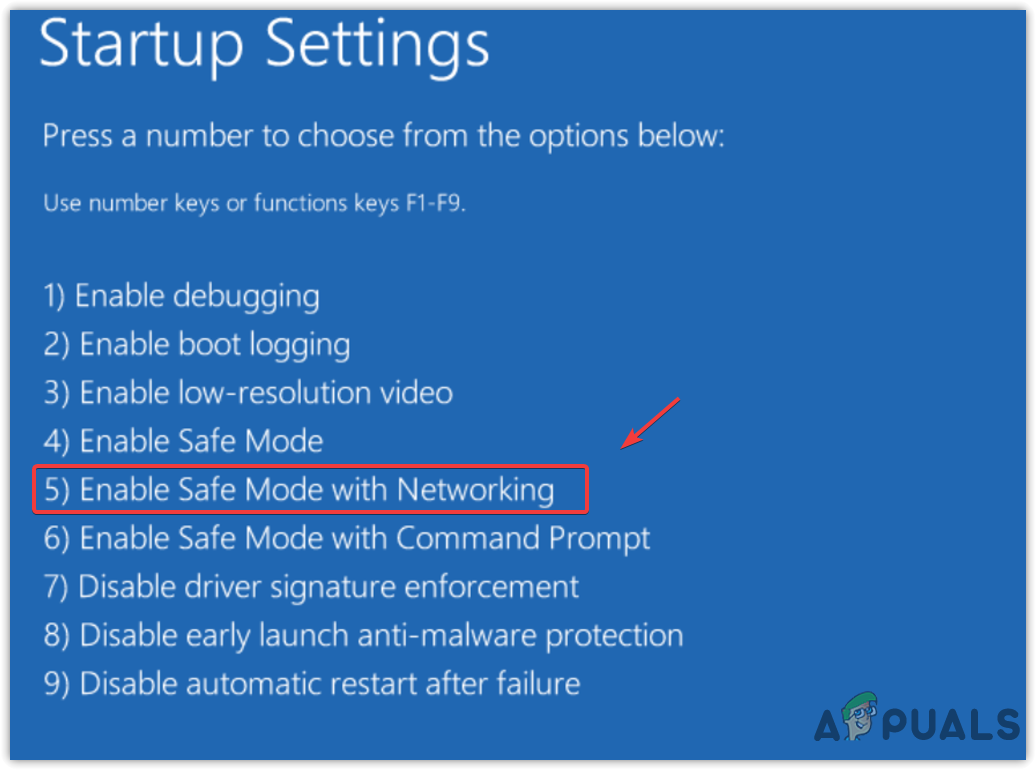
Enabling Safe Mode with Networking from Windows recovery environment - Once your Windows booted into Safe Mode, continue with the following solutions.
1. Analyze a Minidump file
A minidump file contains information about why the system has crashed. It could help find a root cause of a BSOD or Stop code error. When you read a minidump file, you will get a list of information such as causing driver, Stop Code and its parameters, and other information.
Since the Stop Code can occur due to system drivers, it doesn’t make sense to uninstall all the drivers – it’s better to find and uninstall only the corrupted ones.
Configure Minidump file
Windows requires a paging file of 2 megabytes (MB) on a system drive. When a computer crashes, the Minidump file automatically generates in the specified directory each time. Windows stores a list of Mini dump files in the Windows %SystemRoot%\Minidump.
Usually, you don’t need to configure Windows to create a minidump file as the option is enabled by default, but in case Windows is not configured to generate a minidump file, follow the steps:
- Hold the Windows key and then press the R key to launch Run Program.
- Enter the command sysdm.cpl to open the System Properties.
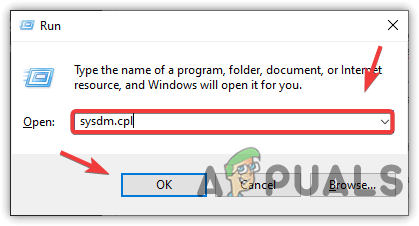
Navigating to System Properties Window - Go to Advanced from the top and click Settings under Startup and Recovery.

Opening system failure and debugging settings - Under the drop-down of Automatic Memory Dump, select Small memory dump (256 KB).
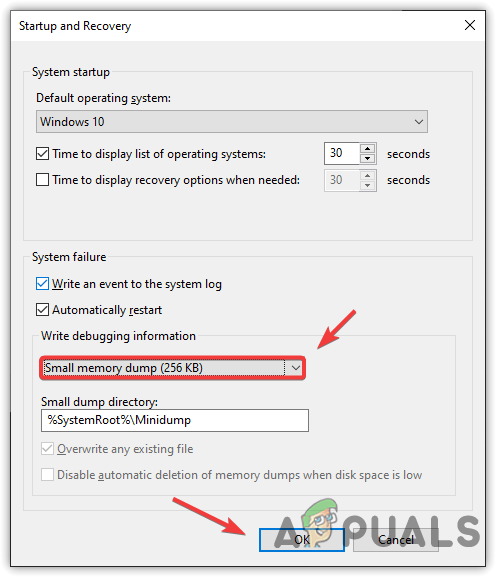
Configuring Minidump file - Once done, click OK.
How do I Read Minidump file?
To analyze a minidump file, we will have to download a Software Development kit, a package that users can use for debugging and application development. Once we have downloaded a package, we will need to download a debug tool from a package to read the Minidump files.
- Download the Software Development tool from the link.
- Wait for the downloading to be finished, then double-click the installer.
- Follow the instructions until you get a Select the features your want to download Window.
- Tick Debugging Tools For Windows and click the Download button to download the debugging tools.
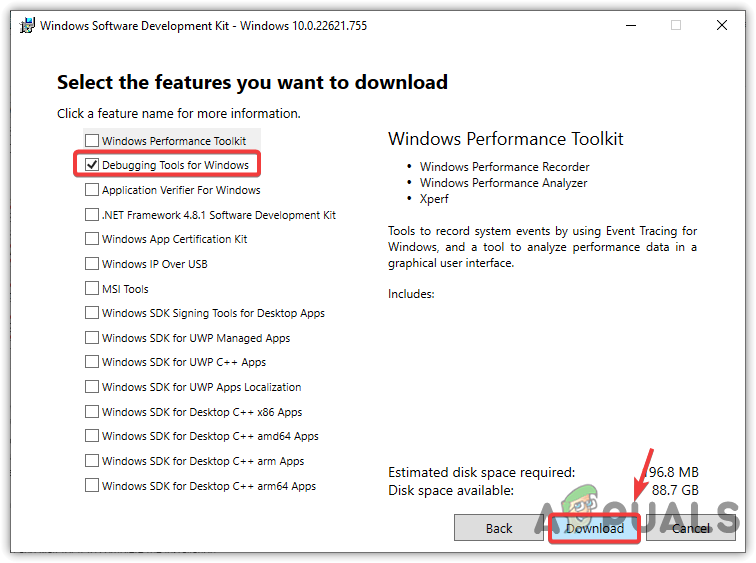
Installing debugging tools for Windows - Once done, go to the following directory and navigate to the folder according to your Windows architecture.
C:\ProgramData\Microsoft\Windows\Start Menu\Programs\Windows Kits

Navigating to the debugging tools folder according to the Windows architecture - In case you don’t know the Windows architecture, click Start Menu and type About your PC.
- Open the Window and check what your system type is. If it is a 64-bit operating system, then navigate to the x64 folder.

Checking Windows architecture - Once you have opened the debug tool folder, open the debug tool application.

Opening Windows debug tool - Once you have opened it, click File and then click Open Crash Dump.

Opening a minidump file - Browse the Minidump file by navigating to the following directory.
C:\Windows
- Select the file and click Open.
- Now click the Analyze -v to see more information about a system crash.
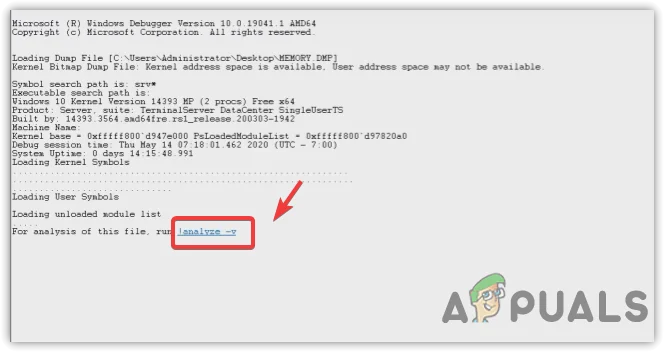
Analyzing Memory Dump file using a software - Wait for the loading to finish, then copy the driver name next to the Image Name.
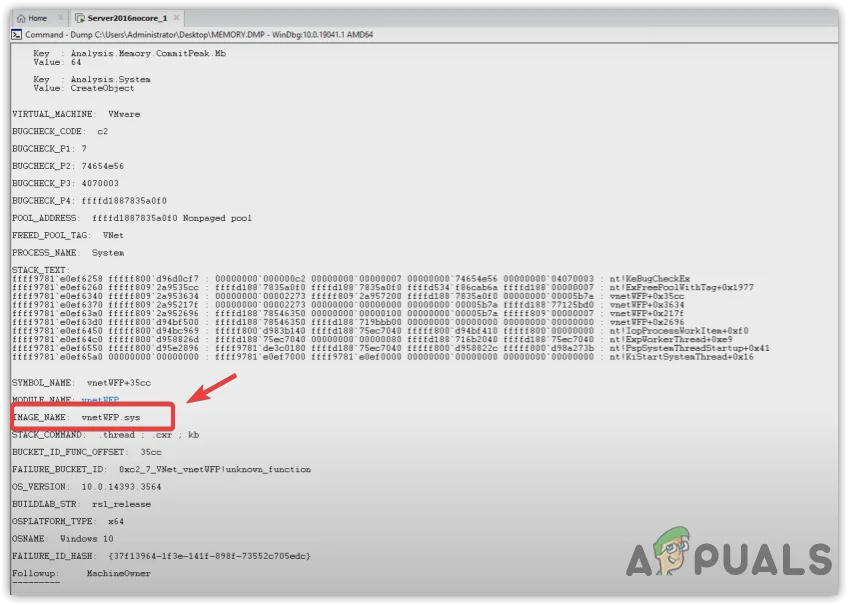
Copying Driver Name - Now search the copied driver on Google to understand where it belongs.

Searching a corrupted driver on Google analyzed by a minidump file - If it belongs to the network driver or any other driver, such as the Graphics driver, that means you need to reinstall that driver as it is a root cause for your stop code error to occur.
Uninstall a Corrupted Driver
Once you figure out which driver is causing the issue, it’s time to uninstall it completely from the computer. To do so, follow the steps:
- Right-click the Start Menu and select Device Manager from the context menu.

Launching device manager - Once you open the device manager, look for the corrupted driver.
- Then, right-click the driver and select Uninstall device.

Uninstalling a corrupted driver - A short confirmation Window will appear to confirm your action. Click Uninstall to remove the driver.
Install driver
After uninstalling the corrupt driver, you need to install a fresh driver to use the hardware. To install a driver, you first need to figure out if the driver you uninstalled can be downloaded from the manufacturer’s website. If you uninstalled the network driver, keyboard driver, or other input and output devices driver, then restarting Windows will install the driver automatically. However, if it is a Graphics driver, headphone driver, or any device that provides drivers on their websites, then we recommend you download the drivers from there first before uninstalling the old ones.
You can also download the drivers from the motherboard or laptop manufacturer’s website. We highly recommend downloading the driver from your manufacturer’s website as it is typically the latest version and contains many bug fixes.
- To download the driver from the manufacturer’s site, press the Windows + R keys to open the Run program.
- Enter msinfo32 and click OK to launch the System Information Window.

Opening System Information Window using a command - Select System Model and press Ctrl + C to copy.
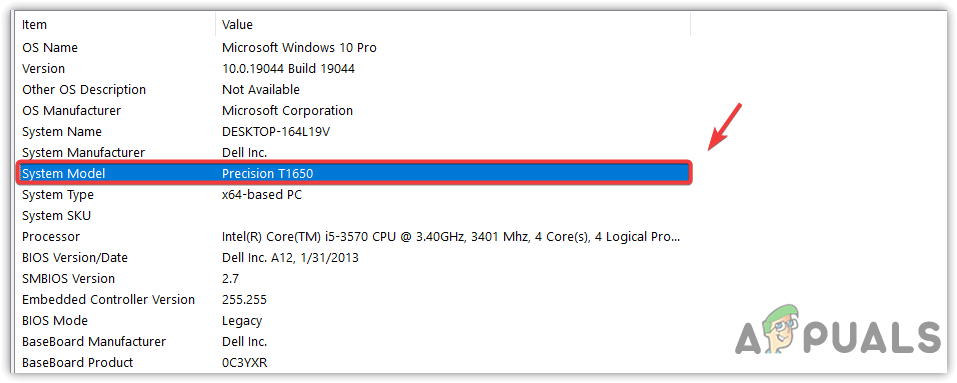
Copying system model number - Now go to your motherboard’s manufacturer’s site and search for your motherboard model number by pressing Ctrl + V.
- Now download the driver you want to download by clicking the Download button.

Downloading Network driver for nerwork adapter - Once the driver is downloaded, double-click the installer and follow the on-screen instructions to install the driver.
2. Use a System Restore Point
Since the stop code can occur due to various software issues, such as missing or corrupted system files and drivers, we can easily fix this by restoring Windows to the previous state using a system restore point.
When a user creates a restore point, it takes a snapshot of registry files, Windows files, and drivers to store a computer’s ‘state’ in memory. When a restore point is successfully created, you can then restore a previous, working version of Windows before corrupted drivers or Windows updates were installed.
Remember, you must have a restore point created before the issue started to occur. If so, restoring Windows to that previous state could be a solution for fixing the BSOD error.
- To use a restore point, click Start Menu and search for rstrui.

Opening a system restore Settings with a command from start menu - Open the System Restore settings and click Next.
- In the next Window, select a restore point and click Next.

Selecting a Restore Point to restore Windows in a previous state - Click Finish to restore Windows to its previous state.
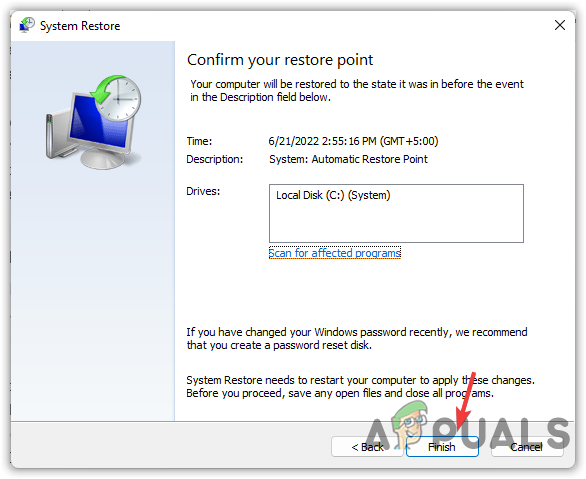
Clicking Finish to start restoration to a previous state - When the restore process is finished, your computer will restart.
3. Disconnect peripherals
Peripheral devices mean Input/Output devices such as a Keyboard, Mouse, Headphones, speaker, USB, external Hard Disk Drive (HDD), and more.
When we connect a peripheral device, it needs to communicate with the computer to start functioning. The hardware needs a driver to communicate with the computer, and Windows always has default drivers for input and output devices. But it is possible that the driver is corrupted and cannot be utilized by Windows, or is not suitable for the hardware, which is why you keep getting a BSOD error.
To ensure that the peripheral devices’ drivers are working properly, you need to temporarily disconnect all of them to check if the issue is fixed. If it does not reoccur, plug the devices back in one by one, and each time, wait for a couple of minutes to confirm that they are not creating a problem.
When you figure out which device is causing the problem, simply uninstall its drivers, then reinstall them by restarting Windows, to see if the issue is fixed. If the drivers are not installed after restarting Windows, then download them from the internet and install them.
4. Run System File Checker
System File Checker (SFC) is an inbuilt command line troubleshooting utility that scans for corrupted system files and replaces them from the cache folder located in %WinDir%\System32\dllcache. Since corrupted system files can cause BSOD or stop code, running the SFC command might help.
- Click Start Menu and type Command Prompt.
- Right-click the command prompt and select Run as administrator.
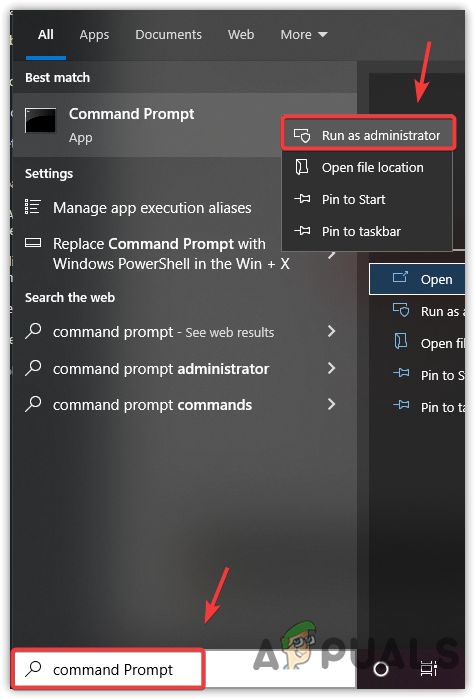
Running Command Prompt as administrator to access previleges - Once the command prompt is launched, enter the following command and wait for the verification to be finished.
sfc /scannow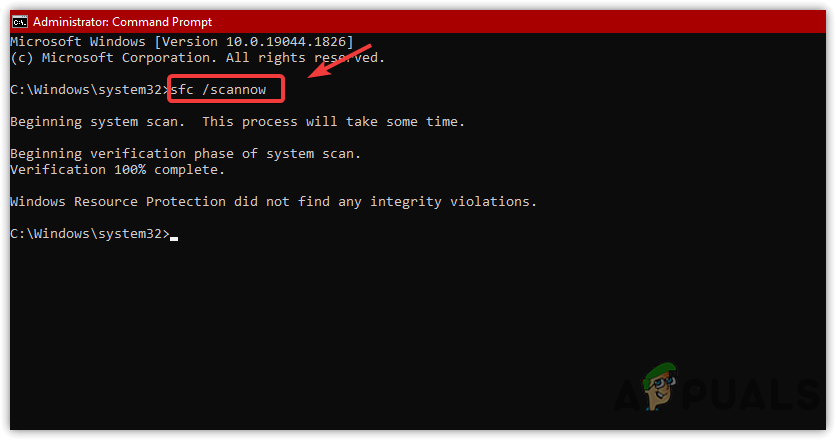
Fixing corrupted system files using a command line utility - Once done, check if the BSOD error persists.
5. Check for Hardware problems
Hardware problems play a major role in showing stop code or BSOD errors. The best way to troubleshoot BSOD errors is to test all the Memory (RAM) connected to the system, as most of the BSOD or stop code errors can be caused by damaged or faulty RAM.
Once you test all the RAM, the next hardware to test is your secondary hard disk. Use your system without the secondary hard disk to see if it fixes the issue. If not, then we recommend taking your system to a repair shop.
6. Reset Windows without losing data
The final solution is resetting your Windows without losing the data, provided none of the methods has worked so far. However, if it also fails to fix your issue, you should consider that there might be a serious hardware problem preventing Windows from booting or running.
- To reset your Windows, click Start Menu and type Reset this PC.
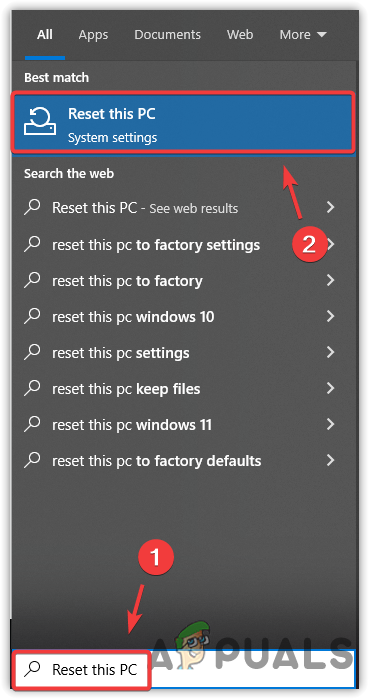
Navigating to Recovery System to Reset Windows - Click Get Started under Reset this PC.

Getting Ready to reset Windows - Select Keep my files, then select Local Reinstall.
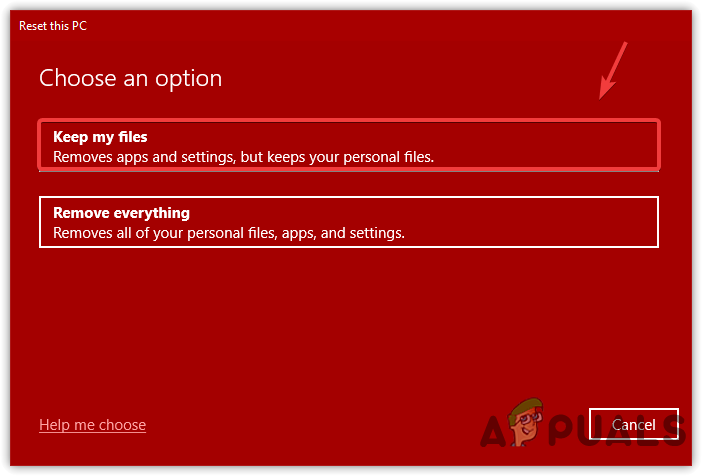
Choosing Keep My Files option to keep the essential data - Click Next and then click Reset to reset your Windows.

Resetting Windows
Once you reset your Windows successfully, then the BSOD error should be fixed. If it does not fix and occurs even after resetting Windows, it is most probably a hardware problem.





